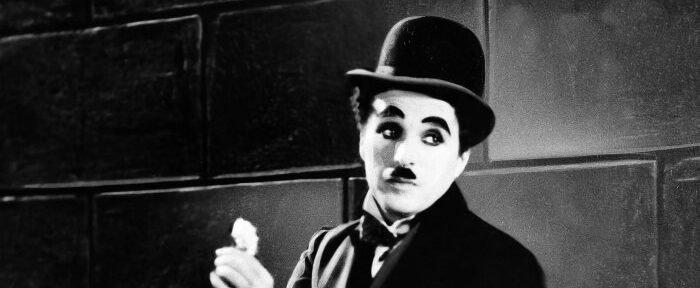Charlie Chaplin, a name synonymous with comedy and silent nana4d films, has left an indelible mark on the world of cinema. His unique style, characterized by slapstick humor and poignant social commentary, transcends time and continues to entertain audiences worldwide. This article delves into Chaplin’s illustrious career, exploring his most iconic films, the themes he addressed, and his enduring legacy.
Early Career and Breakthrough
The Birth of a Legend
Charlie Chaplin’s journey in the film industry began in the early 1910s. Born in London in 1889, Chaplin’s early life was marked by poverty and hardship. These experiences significantly influenced his work, infusing his comedy with a deep sense of empathy and understanding of the human condition. Chaplin’s talent was quickly recognized, and he made his film debut with Keystone Studios in 1914.
Creating the Tramp
One of Chaplin’s most enduring creations is the character of the Tramp, a lovable vagabond with a distinctive appearance. The Tramp’s bowler hat, cane, and mustache became iconic symbols of Chaplin’s work. This character debuted in the film “Kid Auto Races at Venice” (1914) and quickly became a beloved figure, embodying Chaplin’s unique blend of humor and pathos.
Early Successes
Chaplin’s early films, including “The Kid” (1921) and “A Dog’s Life” (1918), showcased his ability to combine comedy with heartwarming storytelling. These films established Chaplin as a major force in Hollywood, earning him widespread acclaim and a dedicated following. His innovative approach to filmmaking set him apart from his contemporaries, cementing his place in cinematic history.
Iconic Films and Themes
The Gold Rush (1925)
“The Gold Rush” is one of Chaplin’s most celebrated films, featuring some of his most famous scenes, such as the dance of the dinner rolls. The film tells the story of the Tramp’s adventures in the Klondike Gold Rush, blending humor with moments of profound poignancy. “The Gold Rush” exemplifies Chaplin’s talent for creating universally relatable narratives, making it a timeless classic.
City Lights (1931)
“City Lights” is often considered Chaplin’s masterpiece. The film follows the Tramp as he falls in love with a blind flower girl and endeavors to help her regain her sight. “City Lights” combines comedy, romance, and drama, showcasing Chaplin’s versatility as a filmmaker. The film’s emotional depth and the iconic final scene have left a lasting impact on audiences and critics alike.
Modern Times (1936)
In “Modern Times,” Chaplin addresses the dehumanizing effects of industrialization and the struggles of the working class. The film features the Tramp navigating a world dominated by machinery and automation. Through his trademark humor, Chaplin critiques the mechanization of society, making “Modern Times” a powerful social commentary wrapped in comedic brilliance.
Chaplin’s Influence and Legacy
Impact on Cinema
Chaplin’s influence on cinema cannot be overstated. His innovative use of visual storytelling and physical comedy set new standards for filmmakers. Chaplin’s ability to convey complex emotions without dialogue showcased the power of visual expression in film. Many of his techniques and styles have been emulated by generations of filmmakers, ensuring his legacy endures.
Social Commentary
Beyond comedy, Chaplin’s films often contained sharp social critiques. He used his platform to address issues such as poverty, inequality, and the impact of modernity on human life. Films like “The Great Dictator” (1940), in which Chaplin satirized Adolf Hitler, demonstrated his willingness to tackle controversial subjects. This blend of humor and social awareness has made his work relevant across different eras.
Cultural Icon
Chaplin’s persona, particularly the Tramp, has become an enduring cultural icon. His image is instantly recognizable, symbolizing the resilience and charm of the underdog. Chaplin’s work has transcended cultural and linguistic barriers, resonating with audiences around the world. His films continue to be celebrated and studied, reflecting his profound impact on both the art of filmmaking and popular culture.
Challenges and Controversies
Political Accusations
Despite his success, Chaplin’s career was not without controversy. In the 1940s and 1950s, his political views and alleged Communist sympathies attracted scrutiny from the U.S. government. This led to his exile from the United States in 1952, significantly impacting his career. Despite these challenges, Chaplin continued to create influential films, such as “Limelight” (1952), further cementing his legacy.
Personal Life
Chaplin’s personal life also garnered significant public attention. His multiple marriages and relationships, often with younger women, were the subject of tabloid speculation. These personal controversies, however, did little to diminish the public’s admiration for his artistic achievements. Chaplin’s ability to navigate personal and professional challenges is a testament to his resilience and dedication to his craft.
Later Career and Recognition
In his later years, Chaplin continued to receive accolades for his contributions to cinema. He was knighted by Queen Elizabeth II in 1975 and received an honorary Academy Award in 1972 for his “incalculable effect in making motion pictures the art form of this century.” These honors reflect the enduring respect and admiration for Chaplin’s work within the industry and beyond.
Conclusion
Charlie Chaplin’s films remain a testament to the power of comedy and the importance of empathy in storytelling. His ability to blend humor with social commentary has left an indelible mark on the world of cinema. From the creation of the Tramp to his iconic films like “City Lights” and “Modern Times,” Chaplin’s legacy continues to inspire and entertain. As we reflect on his contributions, it is clear that Charlie Chaplin’s work will remain a cornerstone of cinematic history for generations to come.
